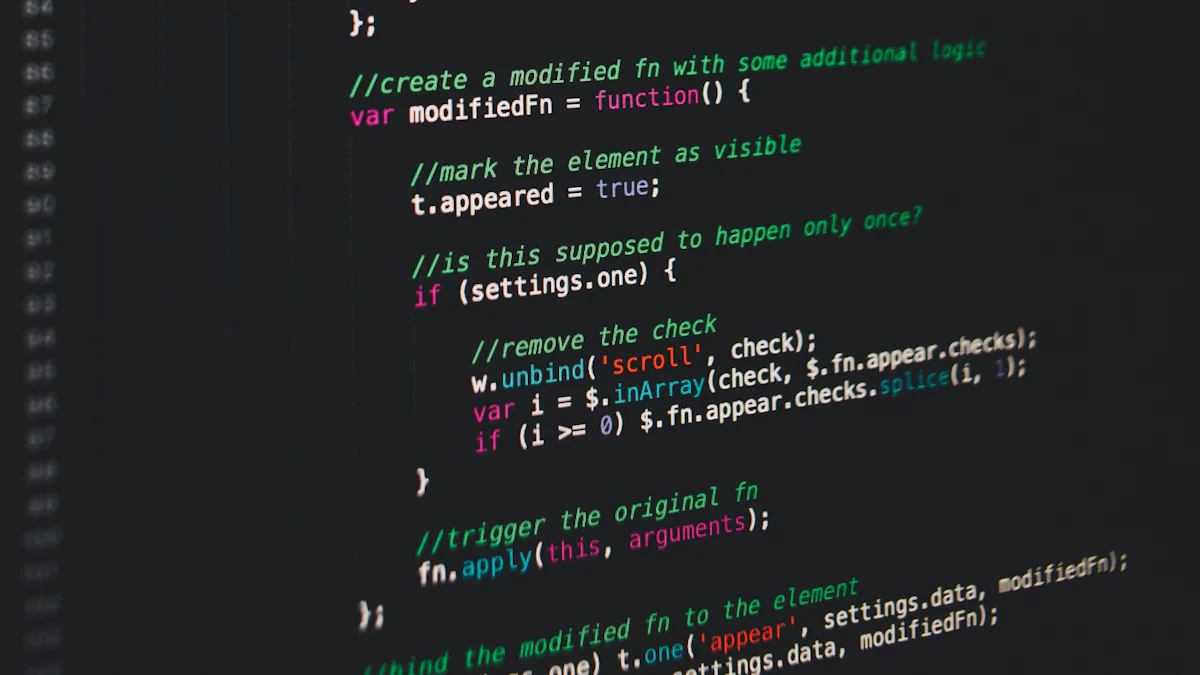PostgreSQL window functions are a vital tool in data analysis, providing the ability to perform intricate calculations across related rows. Their significance lies in simplifying complex queries and enhancing efficiency by processing analyses directly within the database server. This blog will delve into the comprehensive guide of postgres window functions, exploring their syntax, practical examples, and advanced usage. By mastering these functions, data professionals can unlock a realm of possibilities for sophisticated data analysis without the need for convoluted subqueries or self-joins.
Understanding Window Functions
Definition and Purpose
Window functions in PostgreSQL are a powerful tool that can be used to solve a variety of real-world problems. What are Window Functions? These functions allow for calculations across sets of rows related to the current query row, providing a way to perform complex analyses without the need for self-joins or subqueries. Why Use Window Functions? The significance lies in their ability to simplify queries and enhance efficiency by processing analyses directly within the database server.
Key Benefits
Enhanced Data Analysis:
- PostgreSQL window functions offer a comprehensive toolset for data analysts and developers to perform intricate computations across related rows of data.
- By understanding the nuances of window frames and partitions, users can effectively utilize these functions in various applications, such as time series analysis.
Efficiency and Performance:
- Utilizing postgres window functions can significantly enhance the efficiency of queries by eliminating the need for repetitive joins or subqueries.
- The ability to perform calculations across sets of rows related to the current row enhances performance and reduces query complexity.
Syntax and Components
When delving into the realm of postgres window functions, it is essential to grasp the fundamental syntax and components that form the backbone of these powerful analytical tools. Understanding how to structure queries using the OVER and PARTITION BY clauses is crucial for harnessing the full potential of window functions in PostgreSQL.
Basic Syntax
OVER Clause
The OVER clause in PostgreSQL window functions plays a pivotal role in defining the set of rows on which a function operates. By specifying the window frame, analysts can perform calculations across related rows without resorting to cumbersome self-joins or subqueries. This clause essentially delineates the scope within which a function processes data, enabling users to conduct intricate analyses efficiently.
PARTITION BY Clause
In conjunction with the OVER clause, the PARTITION BY clause facilitates further granularity in data manipulation. By partitioning result sets based on specific criteria, such as categories or groups, analysts can isolate subsets of data for targeted analysis. This segmentation capability enhances the precision and depth of insights derived from window functions, making it easier to discern patterns and trends within complex datasets.
Frame Specification
ROWS and RANGE
The distinction between ROWS and RANGE specifications is key to understanding how window functions process data within a defined frame. When utilizing ROWS, calculations consider individual rows within the specified window frame, allowing for precise row-level computations. On the other hand, RANGE considers values relative to the current row's value, offering a broader perspective that includes rows with equal values.
Frame Boundaries
Defining frame boundaries is critical for determining which rows fall within the purview of a window function calculation. By setting explicit boundaries using clauses like UNBOUNDED PRECEDING or CURRENT ROW, analysts can control the scope of analysis and tailor results to meet specific requirements. Understanding how to manipulate frame boundaries empowers users to extract meaningful insights from their data with precision.
By mastering these syntax elements and components of PostgreSQL window functions, data professionals can elevate their analytical capabilities and unlock new possibilities for deriving insights from complex datasets.
Practical Examples
Common Use Cases
Running Totals
One of the most common applications of postgres window functions is calculating running totals in a dataset. This involves aggregating values cumulatively as rows are processed, providing insights into trends and patterns over time. By utilizing the OVER clause in conjunction with appropriate window frame specifications, analysts can efficiently compute running totals without the need for complex subqueries or manual calculations.
Moving Averages
Another prevalent use case for postgres window functions is computing moving averages to smooth out fluctuations in data and identify underlying trends. Moving averages offer a way to analyze data by averaging values within a specified window, enabling analysts to discern long-term patterns from noisy datasets. By leveraging window functions' capabilities, users can easily calculate moving averages and gain valuable insights into the underlying behavior of their data.
Complex Queries
Ranking Functions
In scenarios where it is essential to rank data based on specific criteria, postgres window functions provide a powerful solution. Ranking functions allow analysts to assign ranks to rows within result sets, facilitating comparisons and identifying top performers or outliers. Whether determining sales rankings or prioritizing tasks based on certain metrics, ranking functions offer a versatile tool for organizing and interpreting data effectively.
Percentile Calculations
Calculating percentiles is crucial in understanding the distribution of values within a dataset and identifying key thresholds or boundaries. With postgres window functions, analysts can compute percentiles with precision, segmenting data into meaningful quantiles for analysis. Whether analyzing customer spending patterns or evaluating test scores, percentile calculations enable users to gain deeper insights into the distributional characteristics of their data.
By exploring these practical examples of postgres window functions, data professionals can enhance their analytical capabilities and extract valuable insights from complex datasets with ease.
Advanced Usage
When delving into the realm of postgres window functions, data professionals can leverage their power by combining them with other SQL features to enhance analytical capabilities and streamline query processes.
Combining with Other SQL Features
CTEs and Subqueries
Doug Ortiz, an SQL expert, emphasizes that window functions are a powerful tool that can be used to solve a variety of real-world problems in PostgreSQL. Common Table Expressions (CTEs) and subqueries are essential components in SQL queries that can be seamlessly integrated with postgres window functions. By incorporating CTEs, analysts can create temporary result sets for complex queries, enhancing code readability and maintainability. Subqueries, on the other hand, allow for nested queries within the main query, enabling users to perform intricate analyses efficiently.
Aggregation and Filtering
Charles Victor, another SQL expert, highlights the importance of utilizing aggregation and filtering techniques in conjunction with window functions. Aggregation functions such as SUM, AVG, or COUNT can be applied within the context of window frames to compute cumulative totals or averages across related rows. Filtering data based on specific criteria using WHERE clauses enhances result precision and allows for targeted analysis within defined partitions. By combining these features with postgres window functions, analysts can extract valuable insights from complex datasets with ease.
Performance Considerations
Optimization Tips
Pratyaksh, an expert in Database Management and Data Analysis, underscores the significance of optimizing queries when using window functions. Efficient query optimization involves minimizing resource consumption while maximizing performance output. To enhance query efficiency, analysts should consider indexing frequently accessed columns, avoiding unnecessary joins, and optimizing WHERE conditions to reduce processing time. By implementing these optimization tips, users can streamline query execution and improve overall system performance.
Best Practices
According to V. Gowrishankar, a seasoned SQL professional, adhering to best practices is crucial when working with window functions in PostgreSQL. It is essential to structure queries logically by defining clear objectives and selecting appropriate window frame specifications based on analytical requirements. Additionally, maintaining concise code syntax and leveraging built-in PostgreSQL functionalities like indexes and materialized views can optimize query performance significantly. By following best practices diligently, data professionals can ensure efficient utilization of postgres window functions for advanced data analysis tasks.
By integrating various SQL features like CTEs, subqueries, aggregation functions, filtering techniques, and adhering to optimization tips and best practices outlined by industry experts like Doug Ortiz, Charles Victor, Pratyaksh, and V. Gowrishankar; analysts can harness the full potential of postgres window functions for sophisticated data analysis tasks within SQL queries.
Charles Victor simplifies the understanding of window functions in SQL, making it accessible to both newcomers and experienced users. V. Gowrishankar emphasizes the power of window functions in SQL for performing intricate analyses effortlessly. Pratyaksh highlights PostgreSQL's robustness in database management and data analysis. Doug Ortiz underscores how window functions can solve a variety of real-world problems in PostgreSQL, simplifying complex queries and enhancing data analytics. As EnterpriseDB suggests, mastering window functions is key to simplifying complex queries and achieving efficient data analysis results. By embracing these insights, professionals can elevate their analytical capabilities and drive impactful insights from their datasets with ease.






